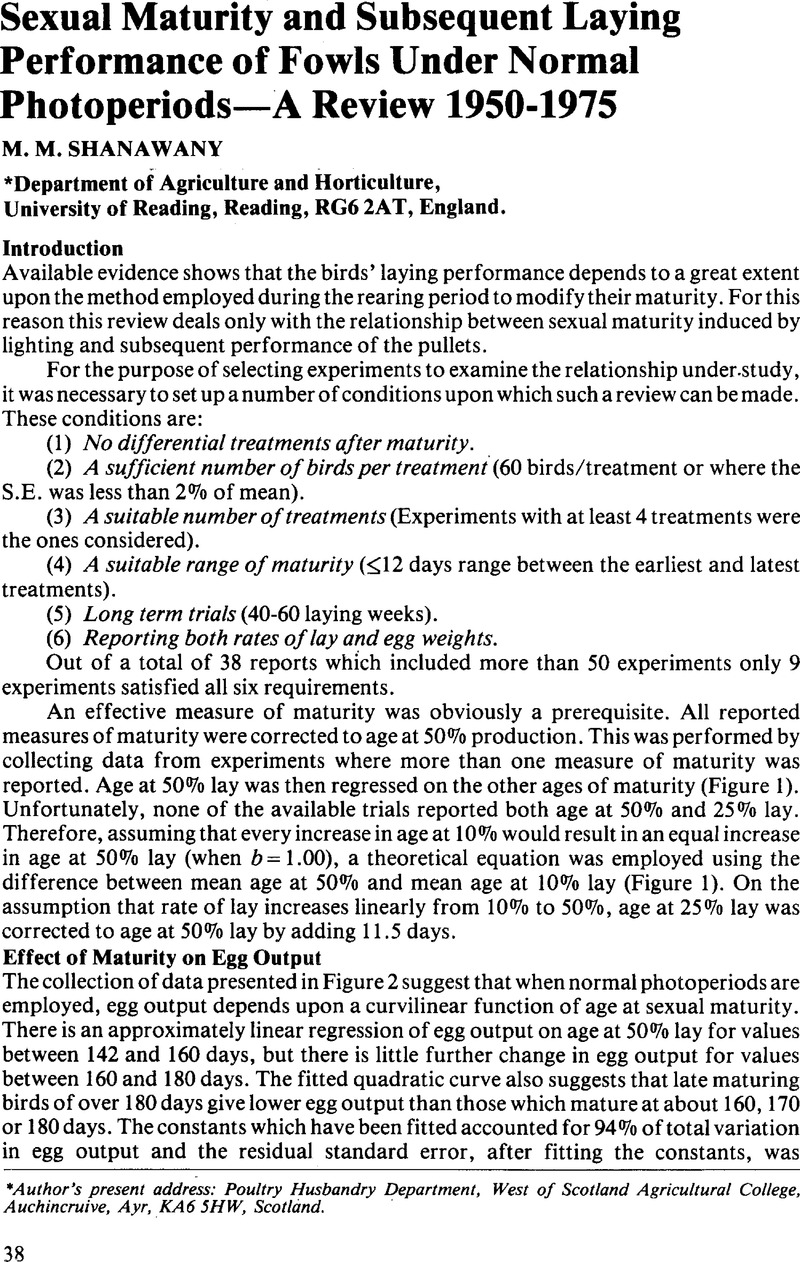Crossref Citations
This article has been cited by the following publications. This list is generated based on data provided by Crossref.
Ernst, R. A.
Milliam, J. R.
and
Mather, F. B.
1987.
Review of life-history lighting programs for commercial laying fowls.
World's Poultry Science Journal,
Vol. 43,
Issue. 1,
p.
45.
Ernst, R.A.
and
Mather, F.B.
1992.
Effect of Lighting and Moving Age on Performance of Leghorn Pullets.
Journal of Applied Poultry Research,
Vol. 1,
Issue. 3,
p.
291.
TSERVENI-GOUSI, A.S.
1993.
The Egg Weight Curve in Pullets Selected for Early Sexual Maturity.
Poultry Science,
Vol. 72,
Issue. 6,
p.
1018.
Charles, D. R.
and
Tucker, S. A.
1993.
Responses of modern hybrid laying stocks to changes in photoperiod.
British Poultry Science,
Vol. 34,
Issue. 2,
p.
241.
Yalcin, S.
McDaniel, G.R.
and
Wong-Valle, J.
1993.
Effect of Preproduction Lighting Regimes on Reproductive Performance of Broiler Breeders.
Journal of Applied Poultry Research,
Vol. 2,
Issue. 1,
p.
51.
Lewis, P. D.
Perry, G. C.
and
Morris, T. R.
1997.
Effect of size and timing of photoperiod increase on age at first egg and subsequent performance of two breeds of laying hen.
British Poultry Science,
Vol. 38,
Issue. 2,
p.
142.
Lewis, P.D.
Caston, L.
and
Leeson, S.
2007.
Rearing photoperiod and abrupt versus gradual photostimulation for egg-type pullets.
British Poultry Science,
Vol. 48,
Issue. 3,
p.
276.
Podkowa, Paweł
and
Surmacki, Adrian
2017.
The importance of illumination in nest site choice and nest characteristics of cavity nesting birds.
Scientific Reports,
Vol. 7,
Issue. 1,





